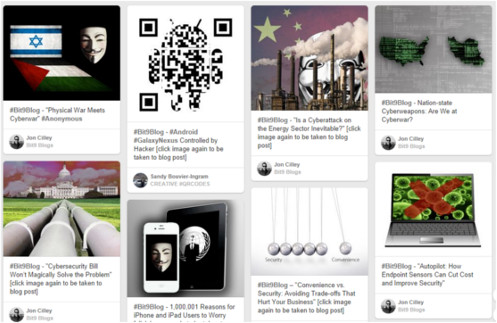Storytelling is a fundamentally human experience. We love to tell stories, ranging from whimsical fantasy to tense political thrillers. Some psychologists believe storytelling is actually necessary for human survival — we are hard-wired to respond to compelling narratives.
Storytelling is frequently cited as a best practice for content marketers, but what happens when your publishing space is limited? B2B social media marketers only have enough space for 1-2 sentences per post, so how can they tell a story with such little space?
When it comes to effective B2B social storytelling, it’s not about shrinking the story to fit within character limits. Rather, it’s about using social tools to make the story bigger. Here’s how you can make your story bigger on social networks:
Visualize the message
The first lesson B2B marketers need to know about storytelling with microcontent is that they aren’t restricted by copy character limits in social messaging. There are multiple opportunities to enhance social network posts with visual content, and it’s simply more effective for generating customer engagement: 44% of social media users are more likely to engage with a brand that posts photos versus other media.
Consider these steps when integrating visual elements with your B2B micro-content on social networks:
- Convey emotion – How should the customer feel after skimming this social post in their feeds? Emotion isn’t restricted to B2C – B2B content can be visually stimulating while still sharing clear facts and figures.
- Use a variety of visual elements – Videos, infographics, memes, comics, SlideShares, quotes, etc. Your B2B brand’s story can be told through more than just photos. Cisco capitalized on a popular event (Star Wars Day, May 4th) to play with the sci-fi interests of their audience.
Address human needs
Brand storyteller Kathy Klotz-Guest argues that B2B content should elevate the product or service to address the human needs of the audience. Marketers need to share the inherent customer needs with their content – and social media offers a venue to highlight the most important examples. Your story thus becomes centered on the customer, while still highlighting what is important to your business.
Anti-virus software Bit 9 utilizes its Pinterest board to focus on the crucial cyber security issues that all B2B businesses face each day. Fear of data breaches is a common human emotion in many IT departments, so Bit 9 provides a visual, social service with their content on Pinterest.
Try these tactics to infuse more customer-centric value in your social messaging:
- Use statistics to reinforce the message – Statistics and percentages help punctuate the story.
- Share customer feedback directly – Share insights from case studies to present the user experience from the customer’s point of view.
Develop and advance the narrative
Good storytellers build narratives that weave through every piece of applicable content. LinkedIn’s Jason Miller (a TopRank client) believes that strong brand stories are told through “remarkable anecdotes”, strung together to advance the narrative. Each of these anecdotes can be promoted individually in social, yet they all serve to shape the ongoing brand story.
Dell (another TopRank client) accomplishes this goal through their “point-of-view” campaigns, which develop content narratives and spread them across their social channels. Each post and anecdote that ties back to the main content serves to advance the narrative, and they utilize a variety of visual elements to convey that message.
Use these insights to advance your B2B narrative for social storytelling:
- Include insights from the “main character” – Who are the stars of your narrative? Use social messaging and visuals to share their progress.
- Share personal details – Provided your company’s brand guidelines allow for personal sharing, have your subject matter experts post and comment on content that advances the narrative.
Have you developed a story that works with the microcontent in your B2B social media marketing? How did the story develop through your company’s social channels? Please share your thoughts with us in the comments!






